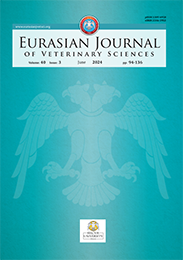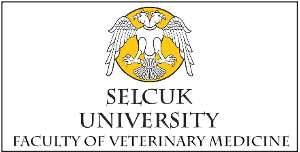| 2018, Volume 34, Number 1, Page(s) 049-055 |
| [ Summary (Turkish) ] [ PDF ] [ Similar Articles ] |
| Detection of Escherichia coli O157:H7 By IMS-PCR Techniques In A Cattle Slaughterhouse |
| Sabri DATLI, Nurhan ERTAŞ ONMAZ |
| Erciyes Universitesi Veteriner Fakültesi, Gıda Hijyeni ve Teknolojisi AD, KAYSERİ, Türkiye |
| Keywords: Cattle, cross-contamination, E. coli O157:H7, slaughterhouse, virulence genes |
| Downloaded:1407 - Viewed: 3043 |
|
Aim: This study was conducted to investigate the presence of
Escherichia coli O157:H7 and to detect its virulence genes, including;
stx1, stx2, eaeA and ehlyA, on cattle carcasses, intestinal
contents and swabs from environmental samples (conveyors,
knives, aprons, saws, hooks, hands) in a beef slaughterhouse in
Kahramanmaras, Turkey.
Materials and Methods: A total of 200 samples, collected from commercial abattoirs, were examined for the presence of E. coli O157:H7 by enrichment/immunomagnetic separation (IMS) with plating of recovered immunobeads onto CHROM agar with cefixime and tellurite. Suspicious E. coli O157:H7 colonies were analysed with anti-O157 and H7 antisera and were confirmed by (Polymerase Chain Reaction) PCR targeting a range of genes including; rfbO157, fliCH7 stx1, stx2, eaeA and ehylA region of bacteria. Results: In the study, E. coli O157 was isolated from one (2%) of the intestinal content samples whereas E. coli O157:H7 was found in two (4%) intestinal content samples and two (4%) carcass samples. All isolates contained stx1, stx2, eaeA and ehylA genes. Conclusions: The isolation of E. coli O157: H7 from the intestinal contents and carcass specimens revealed that the carcasses were contaminated by stool. It was concluded that all E. coli O157: H7 isolates may constitute a potential risk for human health due to the presence of stx1, stx2, eaeA and ehylA genes. |
| [ Summary (Turkish) ] [ PDF ] [ Similar Articles ] |





